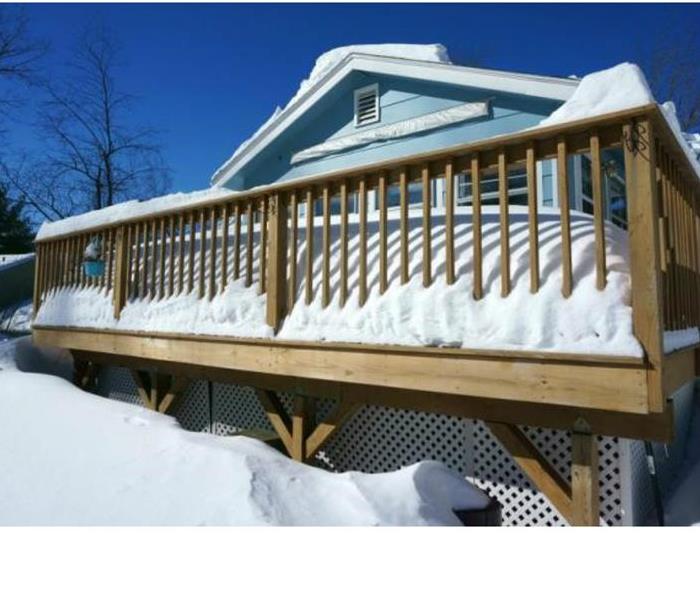Getting Your Home Ready for Winter
12/2/2016 (Permalink)
Getting Your Home Ready for Winter by Bob Formisano Home Repair Expert
Get your home ready for winter!. Photo Credit: Fotolia
Updated November 12, 2016.
Wood-burning Fireplace, Chimney and Flue
Although largely ignored in warm weather, the wood-burning fireplace and chimney can be a major source of cold air leaks and other issues in winter. So the chimney and fireplace need some inspection and service before winter sets in.
- Check to make sure the chimney is clear of any nests from birds, squirrels or other small animals.
- Check flue damper operation. Make sure it opens and closes fully, and that it is can be locked in the open or closed position.
- Check chimney draft. Make sure the chimney will draw up the fire and smoke properly. Test this by taking several sheets of newspaper and rolling them up. Then with the fireplace damper in the open position, light the newspaper in the fireplace. The smoke should rise up the chimney. If it doesn't, you have an obstruction and need to call a professional in to clean the chimney of creosote and ash and possible debris.
- If it has been several years (or never) since you had your fireplace chimney cleaned, you should have it done by a professional chimney sweep. Definitely not a fun DIY project.
- Inspect the fire brick in the fireplace. If you see any open mortar joints, have them repaired immediately A fire can spread into the stud wall behind the masonry fire brick through open mortar joints.
How to Protect Pipes from Freezing
Plumbing is especially susceptible to cold weather and freezing. Burst pipes from freezing can cause some of the most expensive repairs in the home. So let's go over some of the basics to make you have them covered.
- Insulate exposed piping: If you have any exposed water or drain piping in uninsulated spaces, such as in a crawlspace, attic, outside walls, etc., make sure to insulate them with foam insulation at a minimum. Ideally, you should wrap them with electrical heating tape first, then insulate them.
- Exterior faucets: Known as hose bibbs or sill-cocks, the exterior faucet needs to have its water supply turned off inside the house, and you also need to drain water from it by opening up the exterior faucet. You may also want to consider an insulated cover for the hose bibb. And remember to disconnect your garden hoses from the sill cocks or outside faucets, and drain them if you store them outside.
- Seasonal shut-down: If you are shutting down a property for several months you should always shut off the water supply and drain the plumbing system. If a leak were to occur without occupancy, the damage could be catastrophic. See How to Drain Your Home's Plumbing System.
- If you don't use your fireplace often and it leaks air, you can cut a piece of fiberglass insulation and stuff it into the fireplace behind your glass doors to block the cold air coming down the chimney. Of course, you need to remove this when you make a fire...
Roof
Moving to the outside of the home, you should do a quick check of the roof. Either hire someone to inspect the roof if you are not comfortable safely doing this yourself, or inspect it yourself, wearing well-fastened shoes with non-skid soles.
- Check the roof for missing or damaged shingles, and have them replaced.
- Check flashing around chimneys and other roof projections, which are often the source of leaks. Have repairs made, if necessary.
- Make sure gutters and downspouts are clean, having no leaves. Wet leaves remaining in the gutters over winter add significant weight and volume to the gutter when frozen and increase the risk of damage.






 24/7 Emergency Service
24/7 Emergency Service
